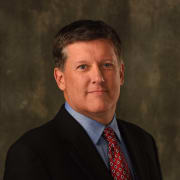Record-High Ticket Prices Have Made the 2025 Ryder Cup's Top Storyline a Dollar Sign

The controversial backdrop to the Ryder Cup in Rome concerned whether or not an American player who chose not to wear a cap was doing so as a protest for not getting paid.
A year later: the PGA of America will charge spectators $750 per day for the competition rounds at next year’s Ryder Cup at Bethpage Black. Tickets will be available as part of a lottery system beginning next week.
Reaction: Oof.
The lottery process was announced last month, but the outcry only recently began as the price structure started to become apparent (the prices were listed from the beginning, albeit buried in the FAQs on the Ryder Cup's website). How this wasn’t a question asked last week in New York at the “year to go” media conference that included captains Keegan Bradley and Luke Donald as well as tournament officials suggests the full brunt of the ticket pricing had yet to make an impact.
Kevin Van Valkenberg of No Laying Up earlier this week questioned the pricing and how it might impact the fan experience and the story took off from there, with numerous outlets weighing in.
Of course, on its face, this kind of news is outrageous. Going to a public course, of all places—one made famous more than 20 years ago when it first staged a U.S. Open (won by Tiger Woods in 2002) and became known for its everyman persona of golfers sleeping in cars to get tee times—and then charging these kind of prices is understandably coming under fire.
In the PGA of America’s defense, tournament director Bryan Karns did a few interviews this week explaining what went into the price structure and how the organization came to its decisions. It clearly wasn’t done haphazardly, and there is a method to the madness, even if most are not going to buy it.
“We view ourselves as a Tier 1 event that's on par with a World Series, or with an NBA Finals Game 7,” Karns told Sirius XM PGA Tour Radio. “That was part of it.”
He also told Geoff Shackelford, who writes a golf newsletter for Substack, that the area’s high cost of doing business and accommodating some 50,000 people a day (including volunteers, media, security), were factors in the pricing structure.
The support of PGA of America golf professionals, of which there are some 28,000 around the country, is always cited as part of the organization’s mission, too, and yet none of those pros are being directly compensated via the Ryder Cup or PGA Championship.
That is up to the individual clubs where they work, and while there is a small retirement plan in place for some members, it is hardly supported to a great degree by Ryder Cup profits. (PGA of America members can also buy Ryder Cup tickets for full price.)
And still ...
There remains that pesky little matter of the players doing this for free while the organizations that profit—the PGA of America, the DP World Tour and, to a lesser extent, the PGA Tour— rake in millions upon millions.
The “pay for play” controversy is worth addressing because, despite attempts to quell it in Rome, the issue turned into a big part of the competition on Saturday when Patrick Cantlay—who went hatless—was mercilessly taunted due a report stemming from the idea that he was without a "USA" lid as a matter of protest.
Cantlay denied this as did most associated with the American team—except for Stefan Schauffele, the father of Xander Schauffele, who in various interviews throughout the week took issue with players not getting paid. (They do get $200,000 per player to be given to a charity of their choice.)
“They are using players’ intellectual properties to make money, and the American players don’t get paid,” Stefan Schauffele told the Times of London last year. “More importantly, this would become a non-issue if all proceeds, net proceeds, from the Ryder Cup were to be donated to common charitable causes. Right now, the American players are asked to donate their time pro bono in the name of patriotism so these organizations can benefit from the profits.
“The PGA (of America) uses this money, and the PGA Tour gets 20% that goes into the retirement of every member. The 12 players supposedly need to eat it and their intellectual property gets abused for the benefit of 200 other people. That’s not right.”
There’s a lot to unpack here. First, the PGA Tour does get a 20% cut of the PGA of America’s television revenue, an unknown amount but safely estimated to be eight figures that goes to the Tour to enhance player compensation, whether current or deferred. Those funds are not going directly to the 12 participants on the U.S. team.
Second, to suggest that the PGA of America is going to disperse all of the “net proceeds” to charitable causes is misguided. The Ryder Cup is a huge profit center for the organization which helps it fund various initiatives, including professional events it runs, such as the KPMG Women's PGA and Senior PGA, events that are likely not profitable. The PGA Championship, which is held annually, is the organization’s other big revenue source.
The Ryder Cup is even more financially important in Europe, where before the PGA Tour formed its alliance with the DP World Tour, the organization was basically losing money in non-Ryder Cup years and propped up by the once-in-four-year playing of the event in Europe, where venues pay multi-millions for the right to host.
Meanwhile, the players are the reason for this windfall. Without the golfers, there’s no Ryder Cup.
And think of this: what other sporting or entertainment event sees the participants do it for free?
Sure, athletes and entertainers do benefits or charitable events often. But the Ryder Cup is a competition where they keep score, where the result matters, where careers are often defined or maligned.
The idea that they should do this for free—just because they are well-compensated otherwise—is naïve. Understand, doing it for nothing is the prevailing view among the masses. It’s why Cantlay’s alleged statement was so controversial, and why you don’t see these guys publicly stumping for money. They know the argument is unpopular.
But this issue has been around for at least 25 years, back to the 1999 Ryder Cup, where Mark O’Meara (who many believe never became U.S. captain because of it) wondered why players weren’t paid and others such as David Duval, Tiger Woods and Phil Mickelson wondered where the money was going.
The controversy was quelled and players started receiving charitable donations, but it has always hovered beneath the surface. Charging fans $750 a ticket is not going to help.
Karns said that figure included taxes and fees. It is also all-inclusive of food and non-alcoholic drinks.
Let’s say, for example, that the PGA keeps $400 per ticket after paying for food, drink and taxes. At 30,000 spectators per day, that is $12 million, or $36 million over the course of three competition days.
That doesn’t include the $255 per ticket for the Tuesday and Wednesday practice rounds, nor the $423 for Thursday. It doesn’t include parking. It doesn’t include alcohol. It doesn’t include merchandise sales.
Perhaps even more important, it doesn’t include the millions being sold in corporate hospitality and television rights fees.
With all of that, the Ryder Cup is a nine-figure revenue source.
And the players get a stipend.
You can argue that it’s expensive to build out the Bethpage course for such an event; that paying for the travel and accommodations for both teams is not cheap; that security and all manner of other things still are in play.
And it’s also true that this is a big-time event worthy of an expensive ticket and that, perhaps, the PGA of America is trying to stem the resale market. In other words, if they charged $300 a ticket, the resellers would turn around and get those high prices anyway. It is also possible that the PGA wants to price out some who might otherwise cause trouble with poor behavior; you’re less likely to cause a scene and risk ejection with such an investment.
But the price has more than doubled from the Rome event last year and it's four times greater than Whistling Straits in 2021, although those tickets did not have an all-inclusive element.
It’s unlikely that the PGA of America will have any trouble selling the tickets. But will they get 30,000 to 40,000 a day at these prices? Will the fans be as engaged if it's so expensive that it attracts more of a corporate crowd? Can you even expect those from Europe to make the commitment—always an important part of the Ryder Cup—when it’s so expensive just to get in?
Then there is the ongoing strife in the game over the incessant talk about money, whether it's LIV Golf, the Strategic Sports Group's $1.5 billion-plus in investment in the PGA Tour or the ongoing negotiations with the Public Investment Fund of Saudi Arabia.
None of those issues are due to the PGA of America, but the Ryder Cup has always been an event that saw an escape from that type of narrative.
It’s now a big part of the story.
